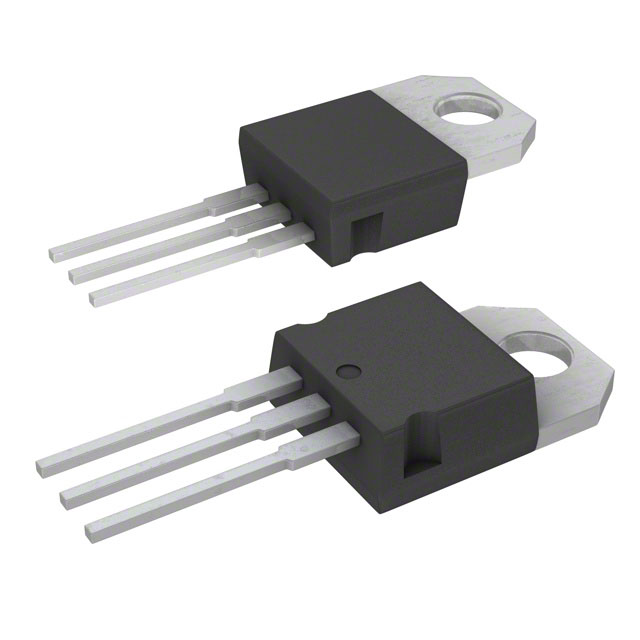Viz Specifikace pro podrobnosti o produktu.

BTA06-400CRG
Introduction
The BTA06-400CRG is a solid-state relay (SSR) belonging to the category of power semiconductor devices. It is commonly used for switching and controlling high-power electrical loads in various applications. This entry provides an overview of the BTA06-400CRG, including its basic information, specifications, pin configuration, functional features, advantages and disadvantages, working principles, application field plans, and alternative models.
Basic Information Overview
- Category: Power Semiconductor Device
- Use: Switching and controlling high-power electrical loads
- Characteristics: Solid-state design, high reliability, fast switching speed
- Package: TO-220AB
- Essence: Reliable and efficient control of high-power loads
- Packaging/Quantity: Typically available in reels or tubes with varying quantities
Specifications
- Voltage Rating: 600V
- Current Rating: 6A
- On-State Voltage Drop: 1.55V
- Gate Trigger Current: 5mA
- Isolation Voltage: 2500Vrms
- Operating Temperature Range: -40°C to 125°C
Detailed Pin Configuration
The BTA06-400CRG typically has three pins: 1. Main Terminal 1 (MT1): Connects to the load's positive terminal 2. Main Terminal 2 (MT2): Connects to the load's negative terminal 3. Gate (G): Connects to the control signal for switching the relay
Functional Features
- Solid-state design for enhanced reliability
- Fast switching speed for precise control
- Optically isolated for improved safety
- Low power consumption
- Built-in overcurrent protection
Advantages and Disadvantages
Advantages
- High reliability and long lifespan
- Fast and precise switching
- Enhanced safety due to optical isolation
- Low power consumption
Disadvantages
- Limited current and voltage ratings compared to mechanical relays
- Sensitive to voltage transients
Working Principles
The BTA06-400CRG operates based on the principle of using a small control signal to switch a much larger load current. When the gate receives the trigger current, it allows the main terminals to conduct, effectively turning on the relay and allowing current to flow through the load.
Detailed Application Field Plans
The BTA06-400CRG finds extensive use in various applications, including: - Industrial automation - Heating and cooling systems - Motor controls - Lighting controls - Power supplies - Home appliances
Detailed and Complete Alternative Models
Some alternative models to the BTA06-400CRG include: - BTA08-600CW: Higher current rating - BTA16-800B: Higher voltage and current rating - BTB16-800BW: Alternating current (AC) control capability
In conclusion, the BTA06-400CRG is a reliable and efficient solid-state relay with a wide range of applications in power control and switching. Its fast switching speed, optically isolated design, and low power consumption make it a popular choice in various industries.
Word Count: 411
Seznam 10 běžných otázek a odpovědí souvisejících s aplikací BTA06-400CRG v technických řešeních
What is the BTA06-400CRG used for?
- The BTA06-400CRG is commonly used as a solid-state relay in various technical solutions to control AC loads.
What is the maximum current rating of the BTA06-400CRG?
- The BTA06-400CRG has a maximum current rating of 6A RMS, making it suitable for controlling moderate to high power AC loads.
What is the maximum voltage rating of the BTA06-400CRG?
- The BTA06-400CRG has a maximum voltage rating of 400V, allowing it to be used in a wide range of AC applications.
Can the BTA06-400CRG be used for dimming applications?
- No, the BTA06-400CRG is not designed for dimming applications and is best suited for simple on/off control of AC loads.
What are the typical applications of the BTA06-400CRG?
- The BTA06-400CRG is commonly used in industrial automation, home appliances, lighting control, and motor control applications.
Does the BTA06-400CRG require a heat sink?
- Yes, for continuous or high-current applications, it is recommended to use a heat sink to dissipate heat and ensure proper operation of the BTA06-400CRG.
Is the BTA06-400CRG compatible with microcontrollers and digital control systems?
- Yes, the BTA06-400CRG can be easily interfaced with microcontrollers and digital control systems for precise and reliable AC load control.
What are the protection features of the BTA06-400CRG?
- The BTA06-400CRG includes built-in overvoltage protection and thermal shutdown to safeguard against voltage spikes and overheating.
Can the BTA06-400CRG be used for resistive and inductive loads?
- Yes, the BTA06-400CRG is suitable for both resistive and inductive loads, making it versatile for a wide range of applications.
Are there any special considerations for driving inductive loads with the BTA06-400CRG?
- It is important to use snubber circuits or varistors when driving inductive loads with the BTA06-400CRG to protect the device from voltage transients and ensure reliable operation.

